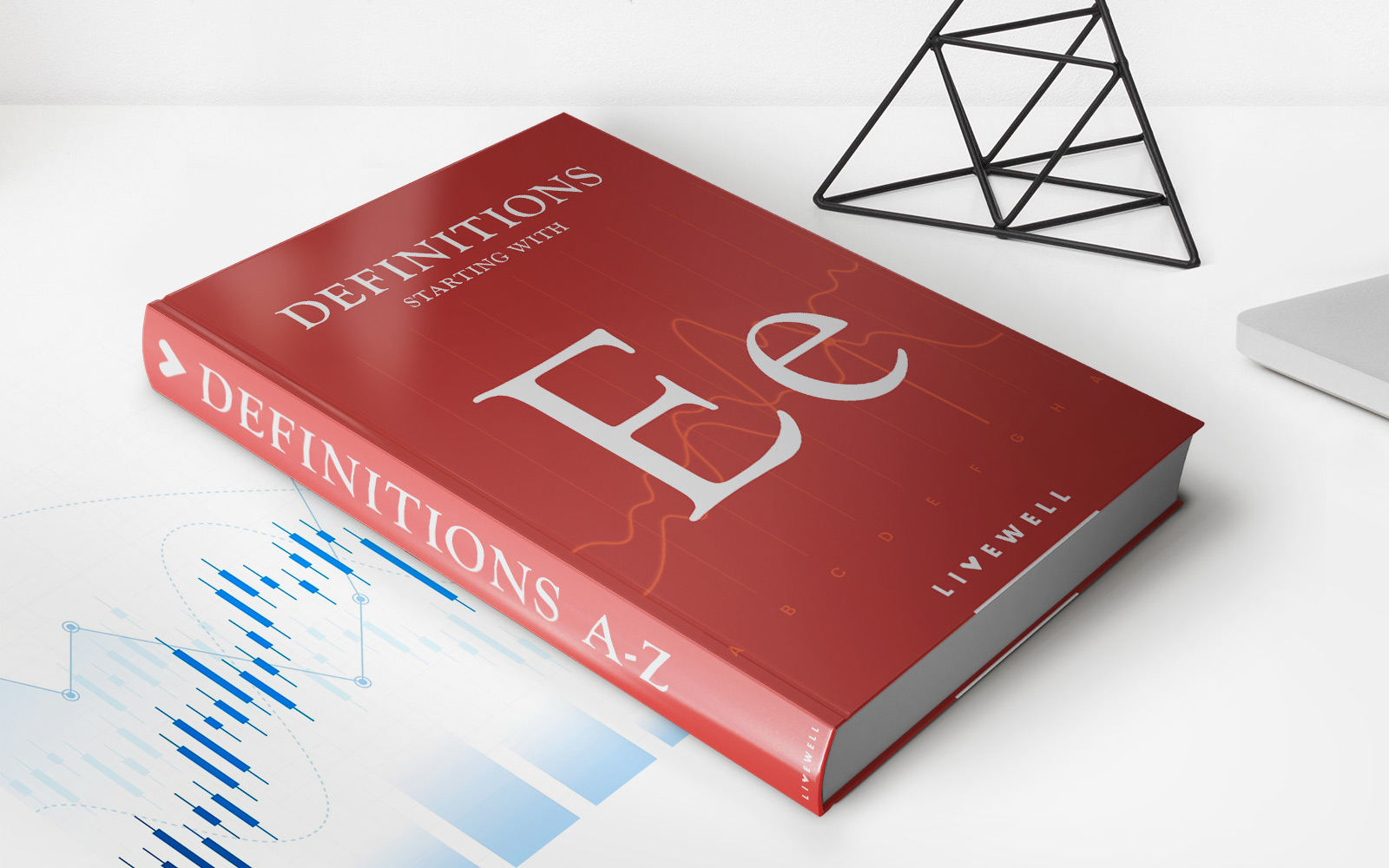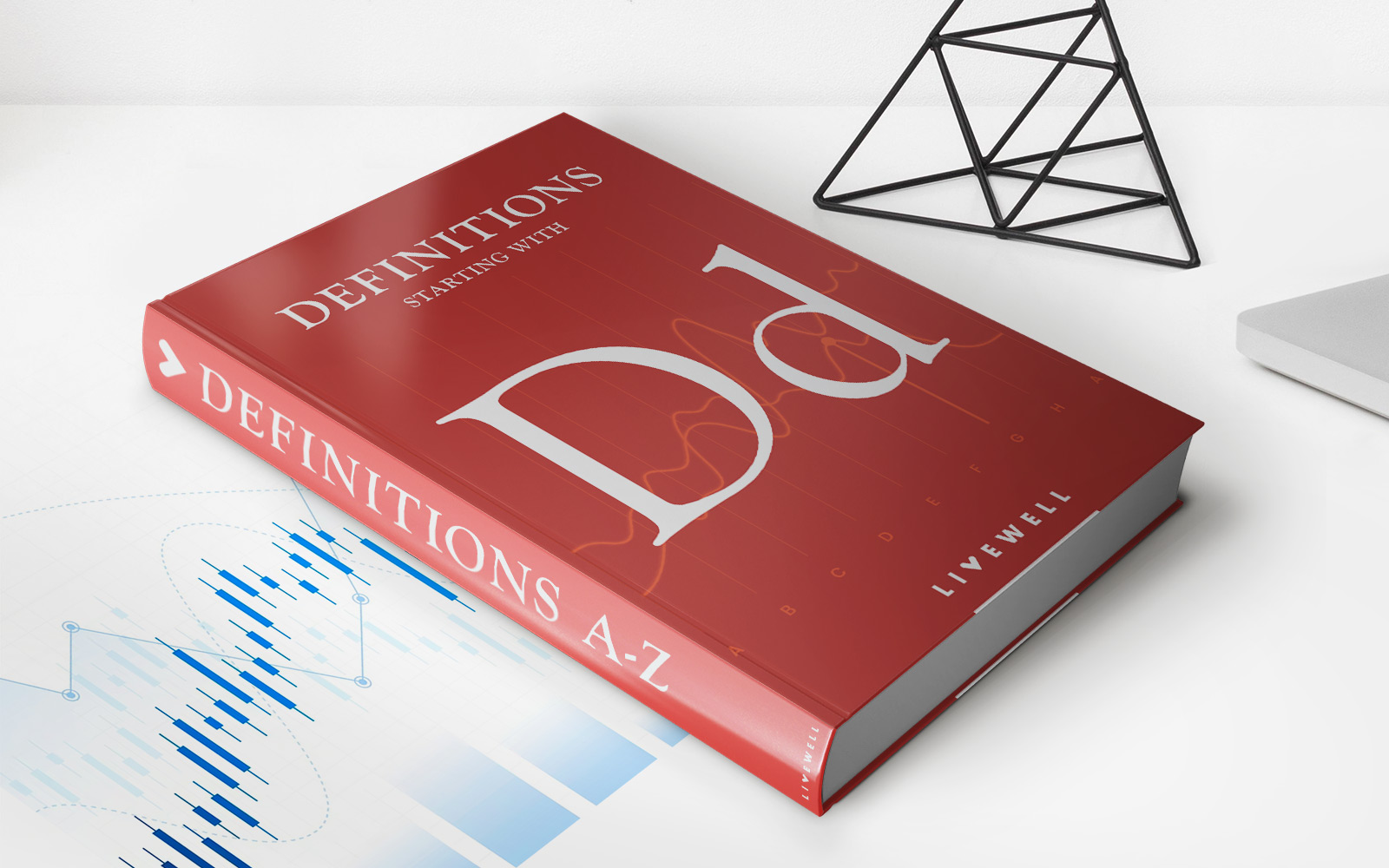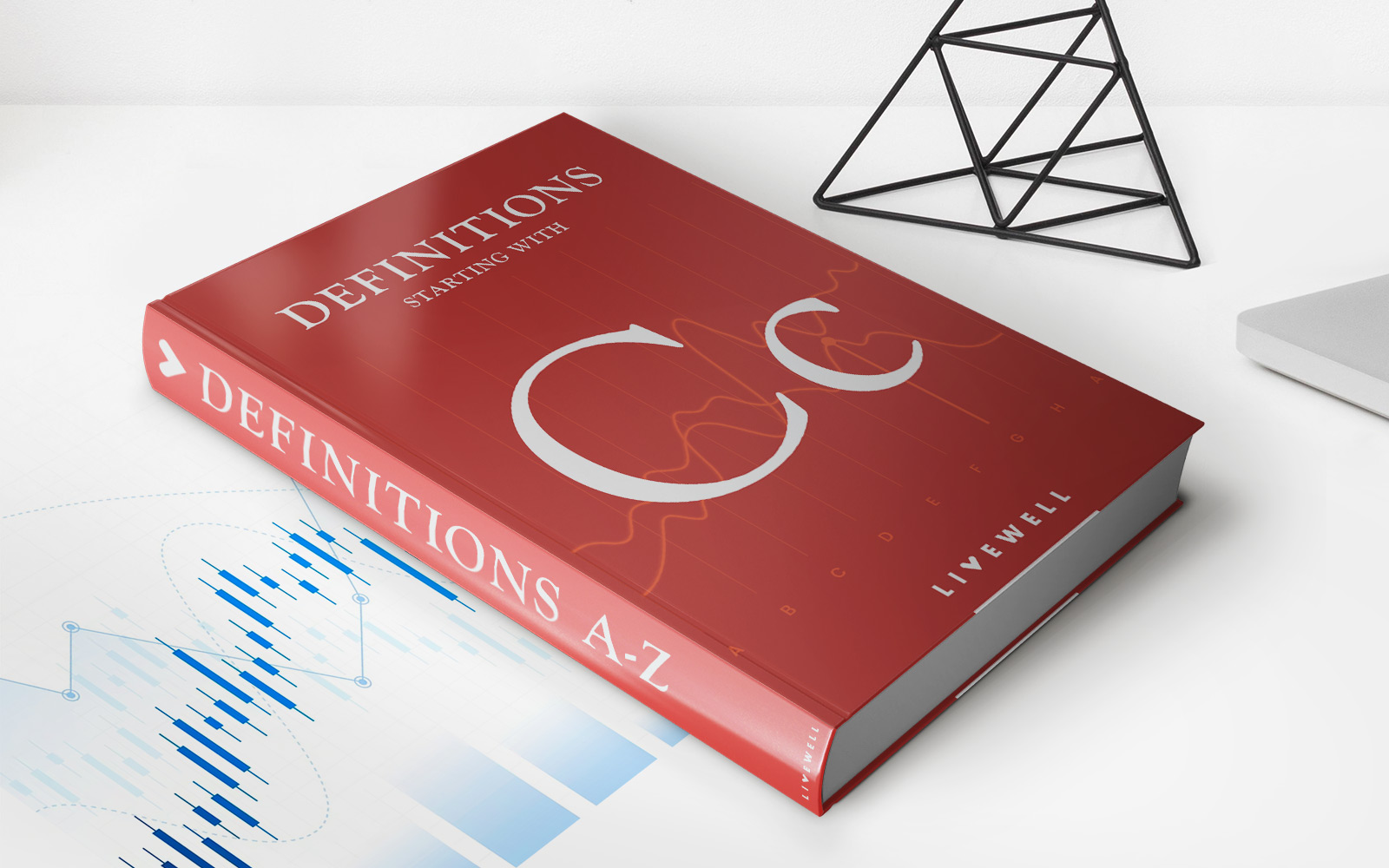

Finance
When Can I Get Money Out Of My 401K
Modified: February 21, 2024
Learn about 401K withdrawals and when you can access your funds. Get expert advice on managing your finances and optimizing your retirement savings.
(Many of the links in this article redirect to a specific reviewed product. Your purchase of these products through affiliate links helps to generate commission for LiveWell, at no extra cost. Learn more)
Table of Contents
Introduction
When it comes to retirement planning, one of the most popular options available to employees is a 401K plan. This employer-sponsored retirement savings account allows individuals to contribute a portion of their earnings on a pre-tax basis, enabling them to save and invest for their golden years.
While contributing to a 401K is straightforward, many individuals are unsure about when they can access the funds they have diligently set aside. It’s essential to have a good understanding of the rules and regulations surrounding 401K withdrawals to make informed decisions about your finances.
In this article, we will delve into the various aspects of accessing money from your 401K. From contribution limits and vesting to early withdrawal penalties and exceptions, we will cover all you need to know about getting funds out of your 401K.
Whether you are nearing retirement age and planning for your future or going through a financial hardship that requires tapping into your 401K, understanding the options and implications can save you from potential pitfalls.
So, let’s dive into the world of 401K withdrawals and explore the circumstances under which you can get money out of your account.
Understanding the Basics of 401K
Before we delve into the details of accessing funds from your 401K, it’s crucial to grasp the fundamentals of this retirement savings account. A 401K is a tax-advantaged retirement plan offered by employers to their employees, allowing them to save and invest for retirement.
One of the primary advantages of a 401K is the ability to contribute pre-tax dollars. This means that the money you contribute to your 401K is deducted from your income before taxes are calculated. As a result, your taxable income is reduced, potentially lowering your overall tax liability.
In addition to the tax benefits, many employers also offer a matching contribution. This means that for every dollar an employee contributes to their 401K, the employer will contribute a certain percentage, typically up to a specified limit. This employer match is essentially free money that can significantly boost your retirement savings.
It’s important to note that 401K contributions are subject to annual limits set by the IRS. The contribution limit for 2021 is $19,500 for individuals under the age of 50. If you are aged 50 or older, you can make catch-up contributions of an additional $6,500, bringing your total contribution limit to $26,000.
Another key aspect of 401Ks is vesting. Vesting determines how ownership of employer contributions to your account accrues over time. It is crucial to understand your vesting schedule, as it impacts your ability to access employer matching funds. Some companies may have a graded vesting schedule, where employees become vested in employer contributions gradually over a specified period. Others may have a cliff vesting schedule, where employees become fully vested after a certain number of years.
Having a solid understanding of the basic workings of a 401K will enable you to make informed decisions when it comes to accessing your funds. Now, let’s explore the various options and considerations for getting money out of your 401K.
Contribution Limits and Vesting
When participating in a 401K plan, it’s important to be aware of the contribution limits set by the IRS. These limits dictate how much you can contribute to your 401K account on an annual basis.
For the year 2021, the contribution limit for individuals under the age of 50 is $19,500. This means that you can contribute up to $19,500 of your pre-tax income to your 401K account. It’s important to note that this limit applies specifically to your own contributions and does not include any matching contributions made by your employer.
For those who are 50 years of age or older, there is a catch-up contribution option available. This allows individuals to contribute an additional $6,500 to their 401K account, bringing their total contribution limit to $26,000.
While there is a maximum limit on how much you can contribute to your 401K, it is worth noting that there is no minimum contribution requirement. This offers flexibility for individuals to contribute any amount they are comfortable with, as long as it falls within the annual limit.
In addition to contribution limits, understanding vesting is crucial when it comes to accessing employer matching funds in your 401K. Vesting determines the ownership of employer contributions and the time it takes for these contributions to become fully vested.
Vesting schedules can vary depending on the policy set by the employer. Some companies may have a graded vesting schedule, where employees become vested in a certain percentage of employer contributions over a period of time, typically spanning three to six years. Other companies may have a cliff vesting schedule, where employees become fully vested in employer contributions after a designated number of years, usually three to five years.
It’s important to keep in mind that even if you leave your current employer before becoming fully vested, you will only be able to take the portion of employer contributions that you are vested in. Any unvested portion will remain with the employer.
Understanding the contribution limits and vesting schedules of your 401K plan will allow you to effectively plan your contributions and take full advantage of any employer matching funds available. It’s crucial to take these factors into consideration when strategizing your retirement savings.
Early Withdrawal Penalties
While a 401K is designed to provide long-term retirement savings, there are penalties imposed for withdrawing funds before reaching a certain age. Withdrawals made before the age of 59 and a half are considered early withdrawals and may be subject to both taxes and penalties.
The first thing to note is that early withdrawals from a 401K are subject to ordinary income tax. This means that the funds withdrawn are treated as taxable income and are subject to federal and state income taxes. Depending on your tax bracket, this can result in a significant portion of your withdrawal being withheld for taxes.
In addition to tax implications, early withdrawals from a 401K are also subject to a 10% early withdrawal penalty imposed by the IRS. This penalty is meant to discourage individuals from tapping into their retirement savings prematurely. For example, if you withdraw $10,000 from your 401K before the age of 59 and a half, you will incur a penalty of $1,000, in addition to any applicable taxes.
It’s important to carefully consider the consequences of early withdrawals from your 401K. Not only will you face immediate tax liabilities and penalties, but you will also be depleting your retirement savings and potentially missing out on the compounding growth over time. However, there are certain circumstances where you may be able to avoid these penalties.
Understanding the penalties associated with early withdrawals can help you make informed decisions about accessing your 401K funds and ensure that you are prepared for any tax liabilities that may arise. While it’s generally advised to leave your retirement savings intact until retirement, there may be instances where accessing your funds becomes necessary due to unforeseen circumstances or financial hardships.
Exceptions to Early Withdrawal Penalties
While early withdrawals from a 401K typically incur taxes and penalties, there are certain exceptions that allow individuals to access their funds without facing the 10% penalty imposed by the IRS. These exceptions are designed to provide flexibility for individuals who are facing specific financial situations or needs.
Here are some common exceptions to the early withdrawal penalty:
- Separation from Service: If you leave your job at or after the age of 55, you may be eligible to take penalty-free withdrawals from your 401K. This exception applies to individuals who separate from service with their employer, either through retirement, job termination, or downsizing.
- Age 59 ½: Once you reach the age of 59 and a half, you can make penalty-free withdrawals from your 401K. This is considered the standard age at which individuals can access their retirement savings without facing any penalties.
- Qualified Domestic Relations Order (QDRO): In cases of divorce or legal separation, a QDRO may allow for penalty-free withdrawals from a 401K. This allows for the distribution of retirement plan assets to a spouse or dependent as part of a divorce settlement.
- Disability: If you become disabled and are unable to work, you may qualify for penalty-free withdrawals from your 401K. This exception requires certification from a physician stating that you are unable to engage in substantial gainful activity.
- Medical Expenses: In certain cases, you may be able to take penalty-free withdrawals from your 401K to cover medical expenses that exceed 7.5% of your adjusted gross income. These expenses must be unreimbursed and can include medical, dental, and vision expenses.
- Qualified Reservist Distribution: If you are a member of the National Guard or Reserves and are called to active duty for at least 180 days, you may be eligible for penalty-free withdrawals from your 401K.
It’s important to note that while these exceptions may allow for penalty-free withdrawals, they do not exempt the funds from income taxes. In most cases, the withdrawn amount will still be subject to ordinary income tax.
When considering an early withdrawal, it’s crucial to consult with a financial advisor or tax professional to ensure that you meet the requirements for these exceptions and understand the potential tax implications. While the exceptions provide flexibility, it’s generally advised to explore other financial options before tapping into your retirement savings.
Loans from 401K
One of the unique features of a 401K is the ability to take out a loan from your account. Unlike a withdrawal, a loan allows you to borrow money from your 401K balance, which must be repaid within a certain period.
There are several advantages to taking a loan from your 401K:
- Lower interest rates: 401K loans typically have lower interest rates compared to other forms of borrowing. The interest rates are usually set at a few percentage points above the prime rate.
- No credit check: Since you are borrowing from your own retirement account, there is no need for a credit check or approval process.
- Flexible repayment terms: 401K loans generally have flexible repayment terms, allowing you to repay the loan over a predefined period, usually five years. Some plans may allow for longer repayment terms if the loan is used for a primary residence purchase.
- Interest paid to yourself: When you repay the loan, the interest payments go back into your 401K account, essentially allowing you to pay interest to yourself.
While there are benefits to taking a loan from your 401K, it’s important to consider the potential downsides:
- Opportunity cost: When you take a loan from your 401K, the borrowed amount is no longer invested, which means you miss out on potential growth and compounding of those funds.
- Loan repayment obligations: If you leave your job for any reason, the loan becomes due in full. Failure to repay the loan within the specified timeframe can result in taxes and penalties.
- Impact on retirement savings: Taking a loan from your 401K reduces the amount of money available for retirement. It’s important to carefully assess the impact on your long-term financial goals before making this decision.
It’s crucial to thoroughly understand the terms and conditions of a 401K loan before proceeding. Contact your plan administrator to inquire about the availability of loans, the maximum loan amount allowed, repayment terms, and any associated fees.
Ultimately, a 401K loan can be a viable option for accessing funds in certain situations. However, it should be used cautiously and as a last resort, considering the potential impact on your retirement savings.
Hardships Withdrawals
In certain circumstances, individuals may face financial hardships that require them to access their 401K funds before reaching retirement age. To address these situations, many 401K plans allow for hardship withdrawals, which provide early access to a portion of the account balance.
A hardship withdrawal is subject to specific criteria and documentation requirements, as defined by the IRS. While the specific eligibility criteria may vary depending on the plan, common examples of financial hardships that may warrant a withdrawal include:
- Medical expenses: Unexpected medical bills or expenses that are not covered by insurance can place a significant financial burden on individuals.
- Preventing eviction or foreclosure: If you are facing the risk of eviction from your primary residence or foreclosure on your mortgage, you may be eligible for a hardship withdrawal.
- Funeral expenses: The death of a loved one can result in unanticipated funeral and burial costs that may qualify for a hardship withdrawal.
- Education expenses: In certain circumstances, such as the immediate need to pay for education expenses for yourself, your spouse, or your dependents, a hardship withdrawal may be allowed.
- Preventing eviction or foreclosure: If you are facing the risk of eviction from your primary residence or foreclosure on your mortgage, you may be eligible for a hardship withdrawal.
It’s important to note that hardship withdrawals are taxed as ordinary income and may also be subject to the 10% early withdrawal penalty if you are under the age of 59 and a half. However, the penalty may be waived if the withdrawal meets the qualification criteria for a hardship under your specific plan.
Additionally, hardship withdrawals generally cannot exceed the amount necessary to alleviate the financial need. You may be required to provide documentation or evidence to support your hardship claim, such as medical bills, eviction notices, or funeral expenses.
Since hardship withdrawals can have long-term consequences for your retirement savings, it’s crucial to explore other financial options and consider the impact on your future financial security. If possible, it’s generally advised to exhaust other resources, such as emergency savings or other financial assistance programs, before resorting to a hardship withdrawal.
If you find yourself in a situation where a hardship withdrawal is necessary, reach out to your plan administrator to understand the specific requirements and process for initiating a hardship withdrawal from your 401K plan.
Required Minimum Distributions (RMDs)
Once you reach a certain age, the IRS requires individuals with 401K plans and other qualified retirement accounts to start taking withdrawals, known as Required Minimum Distributions (RMDs). RMDs are the minimum amount that must be withdrawn from your retirement account each year.
The age at which you must start taking RMDs depends on when you were born. For individuals born before July 1, 1949, the RMD age is 70 and a half. However, for those born on or after July 1, 1949, the RMD age is 72, thanks to recent changes in legislation.
The purpose of RMDs is to ensure that individuals use their retirement savings for their intended purpose of providing income during retirement and to prevent the indefinite tax deferral of these funds.
The specific calculation for your RMD is based on factors such as the value of your retirement account, your life expectancy, and marital status. The IRS provides uniform tables, known as life expectancy tables, to determine the annual distribution amount.
It’s important to note that failure to take the required minimum distribution can result in significant penalties. If you do not withdraw the RMD amount by the deadline, the IRS imposes a 50% excess accumulation penalty on the amount that should have been withdrawn.
However, it’s worth mentioning that if you are still working and contributing to a qualified retirement plan, such as a 401K, even after reaching the RMD age, you may be able to delay the RMD requirement until you separate from your employment.
It’s crucial to work with your plan administrator or consult a financial advisor to ensure that you meet the RMD requirements and take the correct distribution amount each year. Proper planning and adherence to RMD rules can help you manage your retirement savings in a tax-efficient manner and avoid unnecessary penalties.
Rolling Over 401K Funds
When changing jobs or transitioning into retirement, individuals often face the decision of what to do with their 401K funds from their previous employer. One option is to roll over the funds into another eligible retirement account, such as an Individual Retirement Account (IRA) or a new employer’s 401K plan.
A rollover allows you to transfer the funds from your existing 401K account into a new account without incurring taxes or penalties. By completing a direct rollover, where the funds go directly from one account to another, you can maintain the tax-deferred status of your retirement savings.
There are several reasons why individuals choose to roll over their 401K funds:
- Consolidation and control: Rolling over your 401K funds into an IRA or a new employer’s plan allows you to consolidate your retirement accounts, making them easier to manage and monitor. It provides you with more control and flexibility over your investment choices and retirement savings strategy.
- Access to a wider range of investment options: While 401K plans typically offer a limited selection of investment options, rolling over into an IRA can provide a broader range of investment choices, including individual stocks, bonds, mutual funds, and more.
- Avoiding taxes and penalties: By completing a direct rollover, you can avoid taxes and penalties that may be incurred if you were to take a distribution from your 401K. This preserves the tax-deferred growth potential of your retirement savings.
- Continued tax advantages: Rolling over your 401K funds into a traditional IRA or another qualified retirement account allows you to maintain the tax advantages of your savings. If you choose to roll over into a Roth IRA, you will need to pay taxes on the rollover amount, but future qualified withdrawals will be tax-free.
It’s important to note that there are rules and regulations surrounding rollovers, and it’s advised to consult a financial advisor or tax professional to ensure that you follow the correct procedures and meet the requirements. Additionally, some employer-sponsored 401K plans may have restrictions or administrative fees associated with rolling over the funds, so it’s essential to consider these factors as well.
By carefully considering your options and making an informed decision about rolling over your 401K funds, you can position yourself for greater control, flexibility, and potential growth of your retirement savings.
Conclusion
Understanding the rules and options for accessing funds from your 401K is crucial for effective retirement planning. While a 401K provides valuable tax advantages and employer matching contributions, it’s important to be aware of the restrictions and potential consequences of withdrawals.
Contributing to a 401K allows you to save for retirement on a pre-tax basis, and it’s essential to take advantage of these tax benefits by contributing the maximum allowed amount each year. Additionally, understanding vesting schedules and employer matching contributions can help you make the most of your retirement savings.
Early withdrawals from a 401K are subject to taxes and penalties, making it important to carefully consider the financial implications before accessing your funds. However, certain exceptions exist that allow for penalty-free withdrawals, such as separation from service, disability, and certain medical or educational expenses.
If you are in need of funds but want to avoid penalties and taxes, you have the option to take a loan from your 401K. While this offers flexibility, you should weigh the impact on your retirement savings and consider alternative sources of financing before resorting to a loan.
When reaching a certain age, the IRS requires individuals to start taking Required Minimum Distributions (RMDs) from their 401K. Failure to comply with RMD rules can result in significant penalties, so it’s essential to understand the requirements and consult with a financial advisor or tax professional if needed.
If you’re changing jobs or transitioning into retirement, rolling over your 401K funds into an eligible retirement account can provide greater control and access to a wider range of investment options. Consider the benefits of consolidation, flexibility, and continued tax advantages when deciding whether to roll over your funds.
In conclusion, carefully managing your 401K and making informed decisions about accessing your funds can help you achieve your retirement goals. By understanding contribution limits, hardship withdrawals, RMDs, and rollover options, you can navigate the complexities of your 401K plan and optimize your long-term financial security.














